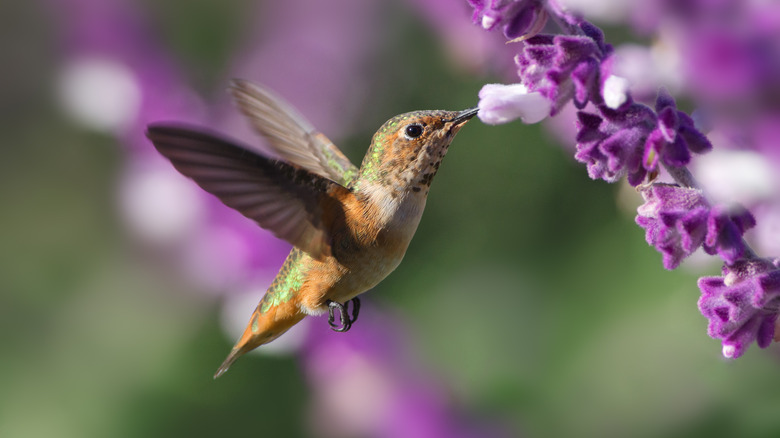Roses are one of the most iconic plants in any gardener’s collection. Their stunning, giant blooms, deep leaves, and intoxicating scent make them incredibly alluring — but not just to human beings. Insects like caterpillars, fuller rose beetles, hoplia beetles, leafcutting bees, aphids, and spider mites can wreak havoc on a beautiful rose garden, chewing holes in the leaves or sucking out their moisture. If you’re dealing with an invasion of pests around your rose bushes, it may be time to call in some natural reinforcements. Sage plants are all members of the salvia family and can act as loyal guards for your garden plants, including your precious rose bushes. This is because sage has a strong, herbaceous scent that deters some of the most damaging garden pests.
But sage plants can do more than just scare away the bad bugs; they also bring a host of biological and aesthetic benefits to your garden. Here’s what you need to know about planting sage next to your roses, how they can help your garden thrive, and tips for selecting and growing this fragrant plant family.
Sage sends pests running for the hills
The scent of sage can be described as earthy, warm, and musky with a slightly sweet edge. Most people find sage’s aroma to be very pleasant, but a select few may think certain varieties smell like socks or sweat. Garden pests like beetles, cabbage moths, snails, and caterpillars would likely agree with them! In fact, these bugs hate the pungent scent of sage so much that just having it in your garden can drive pests away from your rose bushes and other delicate plants.
Sage may even be effective against aphids, the most common pests on roses. Of course, certain aphids have evolved to feed on sage, but the plant is not very appealing to the majority, and the types of aphids that can destroy sage are not always the same kind that attacks roses. Plus, sage actually attracts predators that will chase pests out of your garden, including hoverflies, parasitic wasps, green lacewings, and ladybugs. These natural predators will feed on the aphids without harming your roses, keeping the aphid population down to a manageable level.
Sage improves aesthetics and invites pollinators

In addition to protecting your precious roses, sage plants can bring a host of benefits to your whole garden. These unique purple flowers fill in visual space while enhancing the beauty of rose blooms, and their musky, earthy smell mingles well with the sweet scent of roses. They can deter the bugs you don’t want, but at the same time, sage blooms are still extremely attractive to pollinators, including butterflies, bees, and even hummingbirds.
Sage plants are native to the Mediterranean area. Like roses, they prefer to live in sunny and dry environments with well-draining soil. Some great types of sage to choose from include Caradonna, Tanzerin, Blue Hill, and Mainacht. Texas sage or Mexican bush sage are two other hardy and drought-tolerant varieties, but beware that these can grow quite tall and potentially overwhelm your roses. When planting sage and other companion plants near your roses, give them plenty of root space, at least a two-foot radius for smaller shrub roses. Sage also works wonderfully as a filler or border plant. Already have tons of sage in your garden? Pests can also be deterred by other strong-smelling herbs and alliums like lavender, garlic, onion, catmint, chives, parsley, and marigolds.